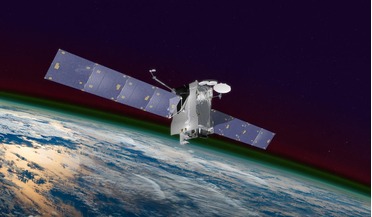 May 2017
Growing plants without gravity
May 2017
Growing plants without gravity
... time in history it was a success! Brassica turned out to be more tolerant to higher ethylene concentrations in the station’s atmosphere and it produced viable seeds both in the first space generation and in re-seeding of those seeds in the space...
 October 2017
Colouring our view of the oceans
October 2017
Colouring our view of the oceans
... phytoplankton die, sink and are buried in ocean sediments. This process provides a long-term sink for atmospheric carbon dioxide. Nevertheless, the process is complex as rates of carbon fixation by phytoplankton vary with species assemblages and...
 June 2019
Solar superstorms and their effects on Earth
June 2019
Solar superstorms and their effects on Earth
...of a coronal mass ejection - a magnetic bubble of hot solar atmosphere thrust from the Sun into the solar wind. CMEs are emitted ... on the way. NASA, US National Oceanic and Atmospheric Administration (NOAA) and scientists around the globe have looked...
 February 2020
Opportunity knocks for UK space industry
February 2020
Opportunity knocks for UK space industry
... within the Gaia of the planet’s atmosphere out of the atmosphere and into space. This includes things like... space effectively, and take some of the heat out of the planet’s atmosphere by using it properly and efficiently. We must face the fact that ...
 26 January 2018
NASA launches GOLD to study Earth-space boundary
26 January 2018
NASA launches GOLD to study Earth-space boundary
..., such as atomic oxygen and molecular nitrogen. It will then be able to provide a map of the Earth to reveal how atmospheric composition changes by location and how these neutral gases shape ionospheric conditions. "For years, we've studied Earth...
 11 July 2018
High hopes for Hi-C mission to reveal secrets of the Sun
11 July 2018
High hopes for Hi-C mission to reveal secrets of the Sun
... of the coronal heating begins. “This is the first combined simultaneous dataset that covers the entire solar atmosphere (photosphere, chromosphere, transition region and corona) at sub-arcsecond resolution,” said principal investigator for IRIS and...